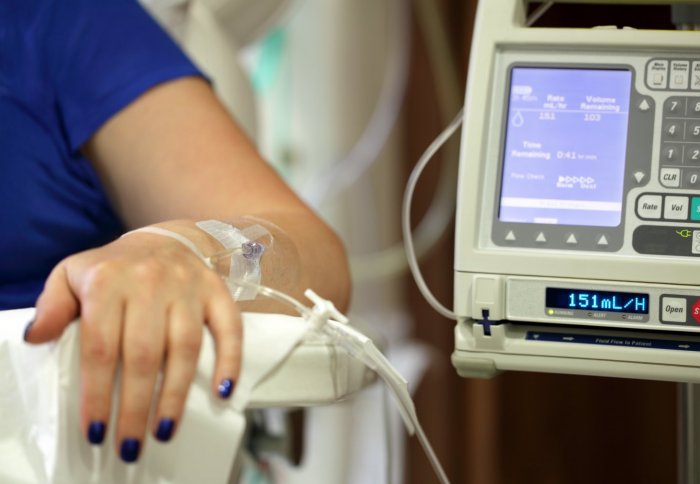

A tiny molecular transporter could be the key to more successful chemotherapy treatment against drug resistant cancer in the future.
Cancers, such breast, stomach and lung cancer, are often treated by a range of chemotherapy drugs that are toxic to cells, affecting their ability to divide and grow.
Delivered in the right dose, therapy causes rogue cancerous cells to die, without affecting healthy cells.
Researchers studied the transporter called TRIAP1/PRELI in the lab. They observed how it maintained a healthy distribution of lipid molecules, part of a process that helps a cell decide whether to live or die when faced with the stress of chemotherapy.
Scientists already know that during treatment, cancer cells become resistant by increasing the number of transporters they have, which protects them from dying, while healthy cells are left vulnerable as their transporter number remains the same.
Based on our research there are now a number of ways we think it could be possible to extend the effectiveness of chemotherapy drugs throughout the whole course of treatment
– Professor Steve Matthews
Research co-author
The scientists now hope that, if the effect of this transporter can be exploited, it could be used to make cancer susceptible to the effects of chemotherapy treatment for longer, which could maximise its benefits for the patient.
The study has been published in the journal EMBO Reports, by scientists in London and Cologne, Germany.
Xeni Miliara, a PhD student with the Department of Life Sciences at Imperial College London and co-first author of the paper said: "Our work may help to develop a drug that could maintain cancer’s sensitivity to chemotherapy. This would have a massive effect on the success of the treatment."
The study was the first of its kind to determine the structure of the proteins that make up this transporter in humans, where they are found inside mitochondria - the power units of the cell. They also compared the way it works in yeast, single-celled microorganisms whose biochemistry has been much studied.
"Mitochondria contain their own genetic code that is billions of years old and largely unchanged between what you find in a yeast cell and in humans," said Miliara. "We share many of the same molecules and reactions, and we have many reasons to believe the TRIAP1/PRELI transporter system is one of them."
Professor Steve Matthews, from the Department of Life Sciences at Imperial, who led the research group, said: "By understanding how this transporter fits into the physiological working of mitochondria, we hope to identify ways to manipulate the system and change the fate of the cell. Based on our research there are now a number of ways we think it could be possible to extend the effectiveness of chemotherapy drugs throughout the whole course of treatment."
Journal reference
Xeni Miliara et al (2015) "Structural insight into the TRIAP1-/PRELI-like domain family of mitochondrial phospholipid transfer complexes" EMBO reports: DOI 10.15252/embr.201540229.
Supporters


Article text (excluding photos or graphics) available under an Attribution-NonCommercial-ShareAlike Creative Commons license.
Photos and graphics subject to third party copyright used with permission or © Imperial College London.
Reporter
Simon Levey
The Grantham Institute for Climate Change

Contact details
Tel: +44 (0)20 7594 5650
Email: s.levey@imperial.ac.uk
Show all stories by this author




Leave a comment
Your comment may be published, displaying your name as you provide it, unless you request otherwise. Your contact details will never be published.